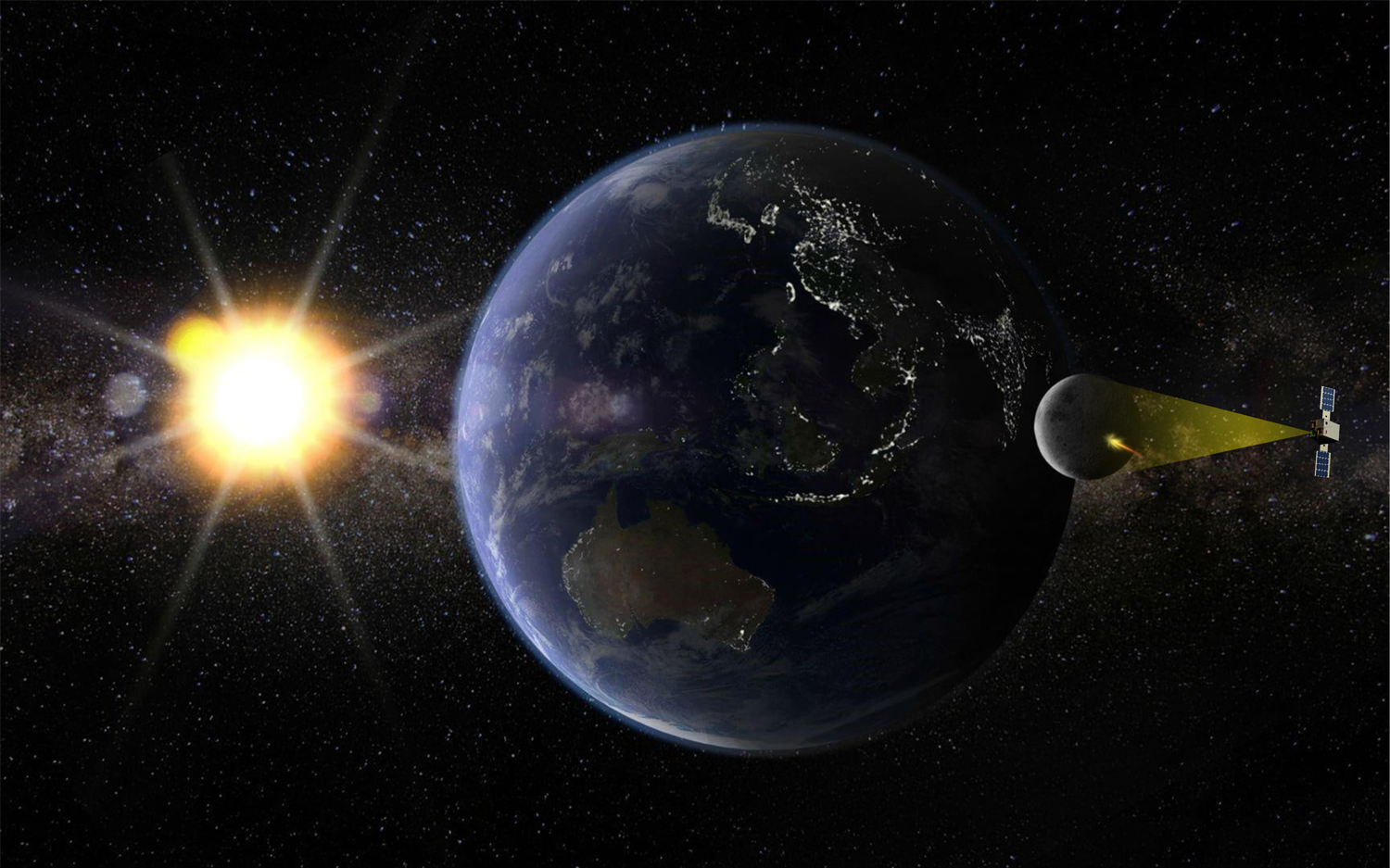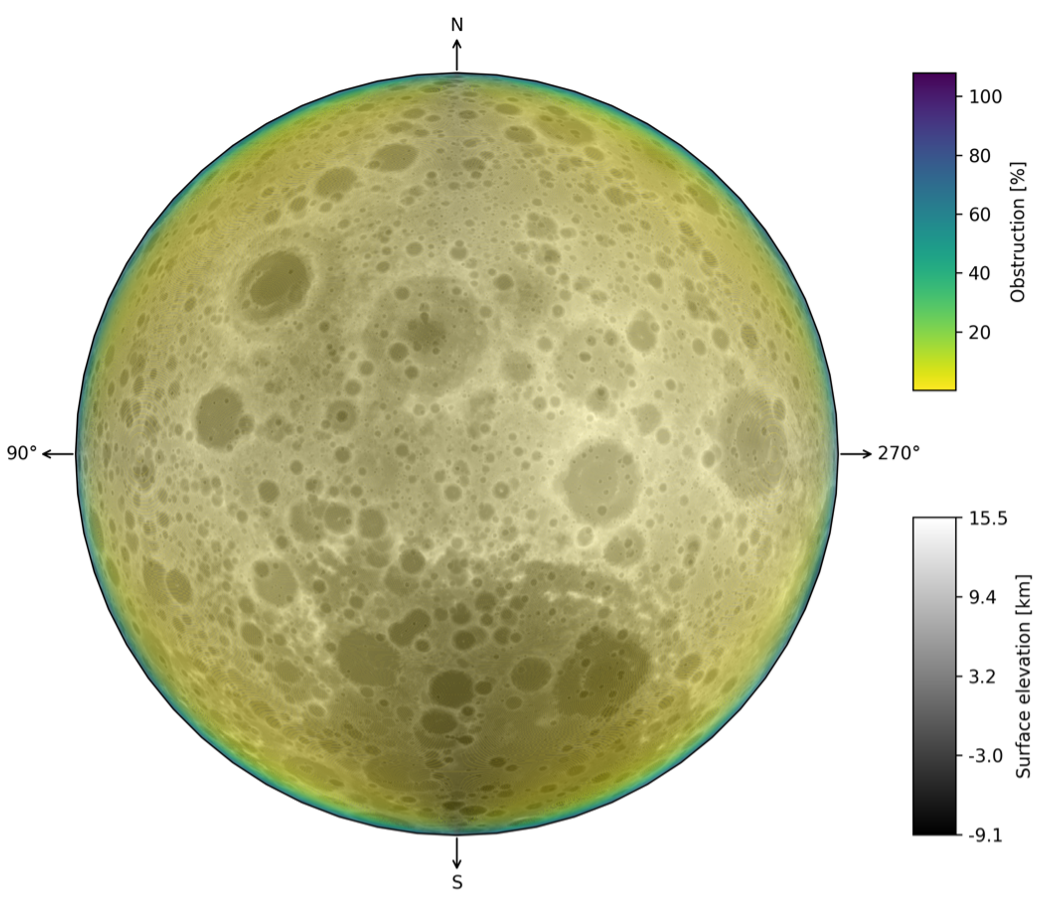The LUMIO mission: refining prediction models for meteoroid impact observation on the lunar farside
- 1Politecnico di Milano, Italy (eloy.pena@polimi.it)
- 2Technical University of Munich, Germany
- 3Agenzia Spaziale Italiana
- 4European Space Agency
1. The LUMIO mission
The Lunar Meteoroid Impacts Observer (LUMIO) mission represents a critical step in advancing our understanding of the meteoroid population nearby the Earth-Moon system [1]. This 12U CubeSat, coordinated by the European Space Agency (ESA) and supported by the Italian Space Agency (ASI) and the Norwegian Space Agency (NOSA), is designed to observe and characterize meteoroid impact on the lunar far side. Utilizing the LUMIO-Cam, an optical instrument sensitive to the visible and near-infrared spectrum (450-950 nm), the mission aims to detect impact flashes from a quasi-halo orbit at Earth-Moon L2 [2], enhancing the global knowledge base beyond the capabilities of Earth-based observations (Figure 2).

Figure 1. Schematic representation of an impact flash detected by LUMIO on the lunar farside.
The continuous influx of meteoroids into the Earth-Moon system poses a not well characterized risk to space assets. The Moon, devoid of an atmospheric shield, faces direct impacts from these space rocks, which alter its surface and could potentially jeopardize human and robotic missions aimed at prolonged lunar habitation [3]. As plans for lunar colonization advance, a comprehensive characterization of the meteoroid environment becomes paramount to ensure the safety and success of these endeavors. Furthermore, LUMIO seeks to resolve existing discrepancies within meteoroid bombardment models concerning the impact ratio at the poles compared to equatorial regions: current models show variance in predicting meteoroid impacts across different latitude [4].
LUMIO will employ a vision-based navigation algorithm that utilizes a limb-based approach to accurately determine the spacecraft's position relative to the Moon [5]. This algorithm achieves sub-pixel accuracy of less than 0.2 pixels in numerical simulations. Such positioning will directly influence the correct localization of lunar impact flashes.
2. Scientific challenges of LUMIO
Although LUMIO could precisely pinpoint the impact location of a meteoroid, the spacecraft would primarily capture the kinetic energy. This limitation presents a challenge in deriving detailed information about the characteristics of the impactor. To gain insights into the meteoroid's composition and velocity, LUMIO's observations will be correlated with known meteoroid streams. However, in the absence of velocity vector measurements, this analysis will depend on statistical models, specifically, machine learning algorithms are well-suited for this task. These models will facilitate the estimation of the meteoroid's properties and impact conditions, which will be relatively straightforward during the peaks of the most active meteor showers and increasingly complex with the minor ones.
Thanks to observing campaigns coordinated concurrently with ground-based networks, well-characterized meteors will facilitate the establishment of the size distribution of meteoroid streams for specific time periods. This information can then be extrapolated to LUMIO detections on the lunar far side during the same times. Additionally, this approach will enable the analysis of potential substructures or components within the meteoroid stream, which may lead to variations in meteoric activity between the Moon and Earth.
The inferred meteoroid parameters and impact conditions will be further utilized to enhance scientific investigation such as impact modeling.
3. Refining prediction models
Recent advancements in the predictive models for meteoroid impact observations, spearheaded by the Department of Aerospace Science and Technology (DART) at the Polytechnic University of Milan (PoliMi), have introduced the Payload, Orbit, and Environment (POE) and the Meteoroid Gun (MeGun) models [6]. These models now incorporate over 50 meteoroid streams and a comprehensive meteoroid background, with efforts underway to expand to more than 500 streams [7]. Such enhancements are anticipated to increase the expected observations of impact flashes by approximately 10% [6]. Moreover, these models will account for lunar surface obstructions by local topography, which vary based on the impact location. This data is derived from a global digital elevation model of the Moon [8], utilizing Monte Carlo ray tracing techniques (Figure 2).

Figure 2. Surface obstruction of the lunar farside from 36000 km of altitude.
Furthermore, LUMIO's approach to image generation, which considers relevant detector noises and optical head effects, aims to produce radiometrically consistent images that reflect the observational geometry between LUMIO, the Moon, and the Sun. These efforts will be combined for software and hardware-in-the-loop (HIL) testing, with future developments planned to incorporate synthetic impact flashes.
4. Conclusions
In conclusion, LUMIO stands as a fundamental mission in the cislunar space exploration endeavor, poised to significantly enhance the fidelity of meteoroid models and thus support both scientific research and planetary defense mechanisms. The integration of advanced algorithms, enhanced modeling capacities, and innovative imaging techniques marks a significant progression in our capabilities to predict and understand the phenomena occurring within our near-Earth environment.
Acknowledgements
The scientific activities of LUMIO are supported by the Italian Space Agency (ASI), whereas the Phase B engineering work has been conducted under ESA Contract No. 4000139301/22/NL/AS within the General Support Technology Programme (GSTP) through the support of the national delegations of Italy (ASI) and Norway (NOSA).
References
[1] Topputo, F., Merisio, G., Franzese, V., Giordano, C., Massari, M., Pilato, G., ... & Koschny, D. (2023). Meteoroids detection with the LUMIO lunar CubeSat. Icarus, 389, 115213.
[2] Cipriano, A. M., Dei Tos, D. A., & Topputo, F. (2018). Orbit design for LUMIO: The lunar meteoroid impacts observer. Frontiers in Astronomy and Space Sciences, 5, 29.
[3] Robertson, D., Pokorný, P., Granvik, M., Wheeler, L., & Rumpf, C. (2021). Latitude variation of flux and impact angle of asteroid collisions with Earth and the Moon. The Planetary Science Journal, 2(3), 88.
[4] Drolshagen, G. (2008). Impact effects from small size meteoroids and space debris. Advances in space Research, 41(7), 1123-1131.
[5] Panicucci, P., Piccolo, F., Rizza, A., Merisio, G., Topputo, F., & Walker, R. (2024). Vision-Based Navigation for the LUMIO CubeSat Mission. In 46th AAS Guidance, Navigation and Control Conference (pp. 1-20).
[6] Merisio, G., & Topputo, F. (2023). Present-day model of lunar meteoroids and their impact flashes for LUMIO mission. Icarus, 389, 115180.
[7] Jenniskens, P. (2023). Atlas of Earth's Meteor Showers. Elsevier.
[8] Smith, D. E., Zuber, M. T., Neumann, G. A., Lemoine, F. G., Torrence, M. H., McGarry, J. F., Rowlands, D. D., et al. (2010). Initial observations from the Lunar Orbiter Laser Altimeter (LOLA). Geophysical Research Letters, 37(18).
How to cite: Peña-Asensio, E., Ferrari, F., Topputo, F., Koschny, D., Ammannito, E., and Moissl, R.: The LUMIO mission: refining prediction models for meteoroid impact observation on the lunar farside, Europlanet Science Congress 2024, Berlin, Germany, 8–13 Sep 2024, EPSC2024-471, https://doi.org/10.5194/epsc2024-471, 2024.